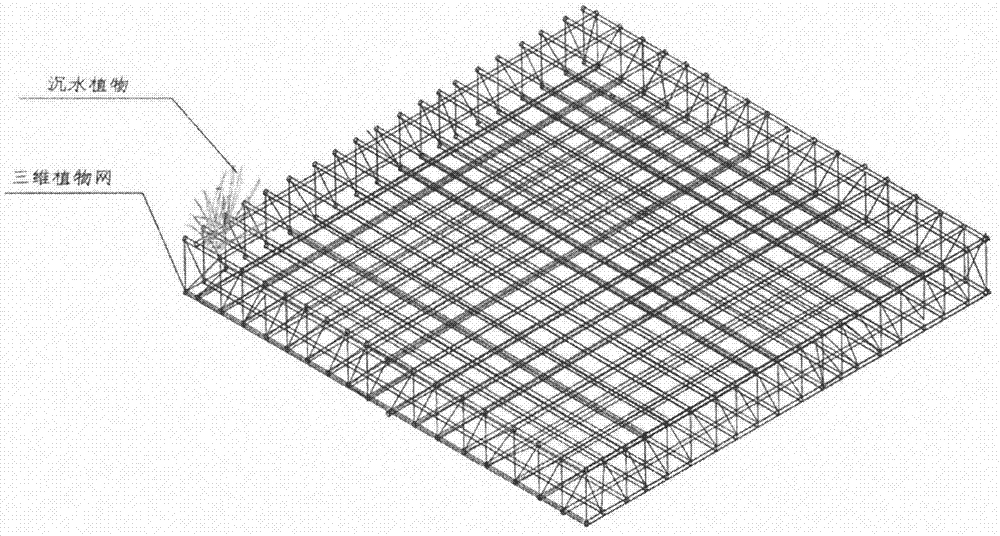Method for restoring submerged plant communities by utilizing three-dimensional plant net
A technology of submerged plants and plant nets, applied in the field of ecological environment restoration, can solve the problems of time-consuming and labor-intensive, low planting rate of throwing plants, low survival rate of throwing seeds, etc., and achieves the effect of improving the survival rate and reducing damage.
- Summary
- Abstract
- Description
- Claims
- Application Information
AI Technical Summary
Problems solved by technology
Method used
Image
Examples
Embodiment Construction
[0022] 1. Compile a three-dimensional plant net with dried plants, fill the hay with sediment as a culture substrate, and evenly sprinkle the market-bought bulbs or seeds of bitter grass, hydra scale buds and other submerged plant propagules in spring, bitter grass The corm density is 50 / m 2 , the density of black algae scale buds is 100 / m 2 , the rooting ability of the broken branches of S. chinensis is strong, and the broken branches of S. spp. are directly planted. Then put the plant net in a paddy field or a shallow pool, and cultivate it in a well-lit environment.
[0023] 2. When the bitter grass and black algae grow to about 10cm, and the micro-dentate eye vegetable grows to about 50cm, put the three-dimensional plant net in a shallow tank filled with water and transport it to the target water body.
[0024] 3. Lay the three-dimensional plant net of bitter grass in the shallow water area of about 70cm, lay the three-dimensional plant net of black algae in the area o...
PUM
 Login to View More
Login to View More Abstract
Description
Claims
Application Information
 Login to View More
Login to View More - R&D
- Intellectual Property
- Life Sciences
- Materials
- Tech Scout
- Unparalleled Data Quality
- Higher Quality Content
- 60% Fewer Hallucinations
Browse by: Latest US Patents, China's latest patents, Technical Efficacy Thesaurus, Application Domain, Technology Topic, Popular Technical Reports.
© 2025 PatSnap. All rights reserved.Legal|Privacy policy|Modern Slavery Act Transparency Statement|Sitemap|About US| Contact US: help@patsnap.com

